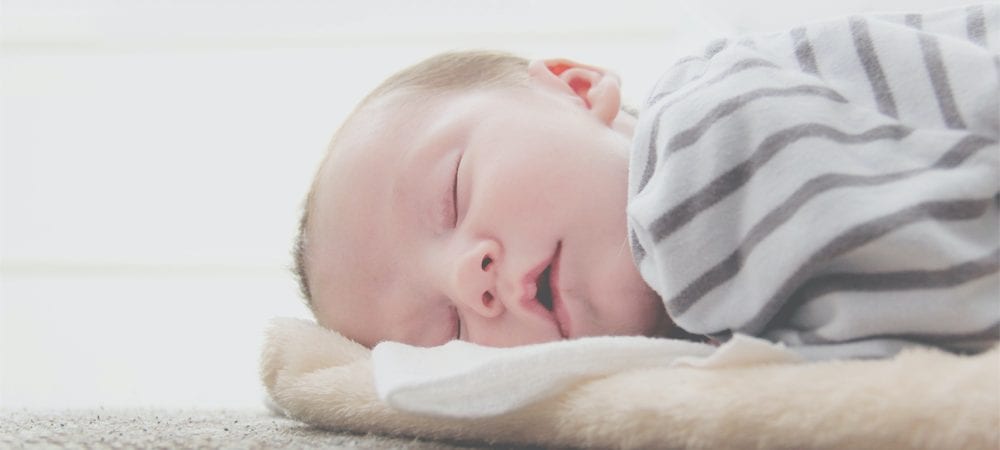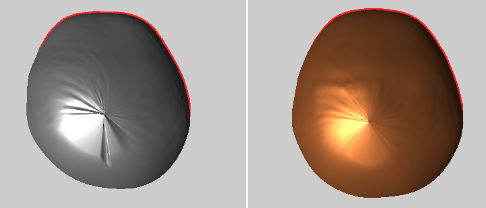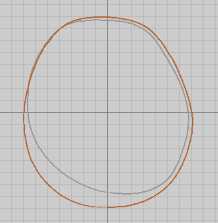
Why Do Some Helmets Have Thin Ventilated Foam And Pads And Others Have Thick Foam Liners?
Cranial remoulding helmet design. What are the differences?
The newer type of helmet such as the TiMbandAir use innovative concepts in design, manufacture and treatment to overcome the known issues of weight, heat and applying modifications during treatment used to control growth within the helmet.
The basic way that all cranial remoulding orthoses (helmets) work is by starting with the baby’s own head shape and then allowing space for it to grow within the helmet, controlling where and by how much the growth is directed to bring about correction. It sounds simple but it is really very complex, to gain the right amount of correction and balance this with control without stressing the skin with pressure.
Traditionally helmets have been made by first copying the head shape, modifying the shape to enable making a helmet that allows growth to bring about correction. Originally the shape was found by taking a plaster cast of the baby’s head, sometimes even using a sedative to allow this. The cast was then filled with plaster to give a positive model which was then modified by adding more plaster. Time consuming and messy with very little opportunity for quantifying the corrections added.
More recently, clinics use scanners to copy the head shape and this is used to carve a foam mould and then plaster corrections are added. Still messy and time consuming with significant plastic waste being generated and no way to quantify the modifications.
More recently modifications have been added using Computer Aided Design (CAD) and then carving a corrected model from a foam block. The corrections can be quantified and recorded but there’s still a lot of plastic waste produced.
Once the mould is made a very thick foam liner is heat moulded onto the shape (it thins a little as it stretches) and a plastic shell is moulded over the top to give a firm shape. This produced even more plastic waste and the amount of material used for the product is about 20% of the total plastics wasted.
The traditional method with a thicker foam means that the clinicians can use their own experience to grind away liner materials. The result is dependent on the clinician’s skill and experience and is not quantifiable, nor can the modifications be fully recorded.
The limitations of the traditional types of helmet are well known, the liner is not breathable so they can be very hot and sweaty to wear especially in summer. They’re also bulky, quite difficult to modify and trim and they need specialist equipment to make any changes as the infant grows.
The TiMbandAir has been specifically designed to overcome all of these limitations. The design brief was to develop a helmet that is lightweight, low profile, breathable, easy to specify and modify in clinic, does not require specialist tools during treatment, is manufactured with low waste of materials and has a low carbon footprint. Using innovative concepts in design, manufacture and treatment to address these well known issues the TiMbandAir has been extremely successful to the parents of the infants who are wearing this style of helmet.
All of the correction is built into the helmet at the specification and design phase and as some of the head shapes that we see are very severe we know that we might need to use the fitting pads to add initial control. Each TiMbandAir is supplied with a series of pads which are used to give control throughout treatment and as time goes on, they’re adjusted to allow the growth to continue to gain the very best result possible.
As each helmet is custom designed using cloud computing with modifications to allow full growth corrections with the maximum amount of change available pre built into the helmet, fitting pads are included as part of the treatment fine tuning for each baby.
Example of before and after treatment. Age at start 5 months, treatment length 4 months.


The TiMbandAir is at the very forefront of technology using the latest clinical, design and manufacturing knowledge to give infants the very best treatment available.
For more information contact us or call 0330 1001800 or if you are concerned about the shape of your child’s head book a FREE pre-assessment for a second opinion.


